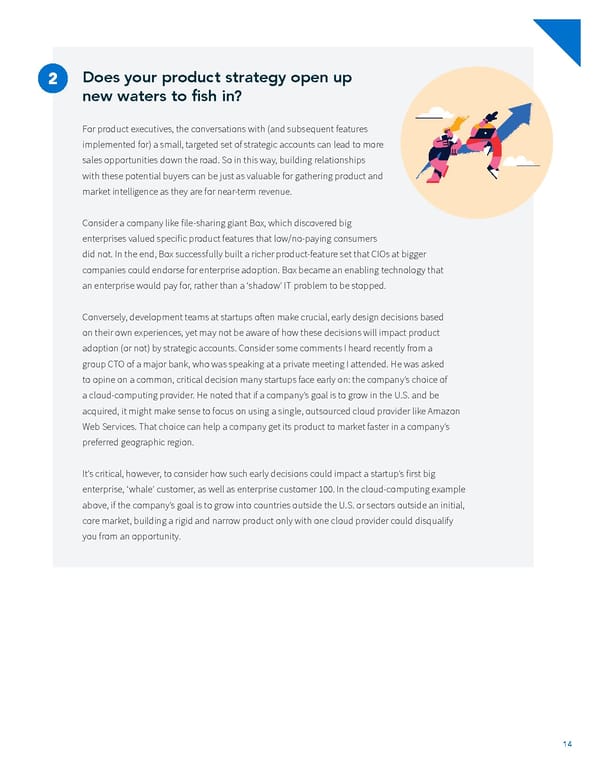Does your product strategy open up new waters to ifsh in? For product executives, the conversations with (and subsequent features implemented for) a small, targeted set of strategic accounts can lead to more sales opportunities down the road. So in this way, building relationships with these potential buyers can be just as valuable for gathering product and market intelligence as they are for near-term revenue. Consider a company like ifle-sharing giant Box, which discovered big enterprises valued speciifc product features that low/no-paying consumers did not. In the end, Box successfully built a richer product-feature set that CIOs at bigger companies could endorse for enterprise adoption. Box became an enabling technology that an enterprise would pay for, rather than a ‘shadow’ IT problem to be stopped. Conversely, development teams at startups otfen make crucial, early design decisions based on their own experiences, yet may not be aware of how these decisions will impact product adoption (or not) by strategic accounts. Consider some comments I heard recently from a group CTO of a major bank, who was speaking at a private meeting I attended. He was asked to opine on a common, critical decision many startups face early on: the company’s choice of a cloud-computing provider. He noted that if a company’s goal is to grow in the U.S. and be acquired, it might make sense to focus on using a single, outsourced cloud provider like Amazon Web Services. That choice can help a company get its product to market faster in a company’s preferred geographic region. It’s critical, however, to consider how such early decisions could impact a startup’s ifrst big enterprise, ‘whale’ customer, as well as enterprise customer 100. In the cloud-computing example above, if the company’s goal is to grow into countries outside the U.S. or sectors outside an initial, core market, building a rigid and narrow product only with one cloud provider could disqualify you from an opportunity. 14
 Guide to Breaking into the Enterprise Market Page 13 Page 15
Guide to Breaking into the Enterprise Market Page 13 Page 15